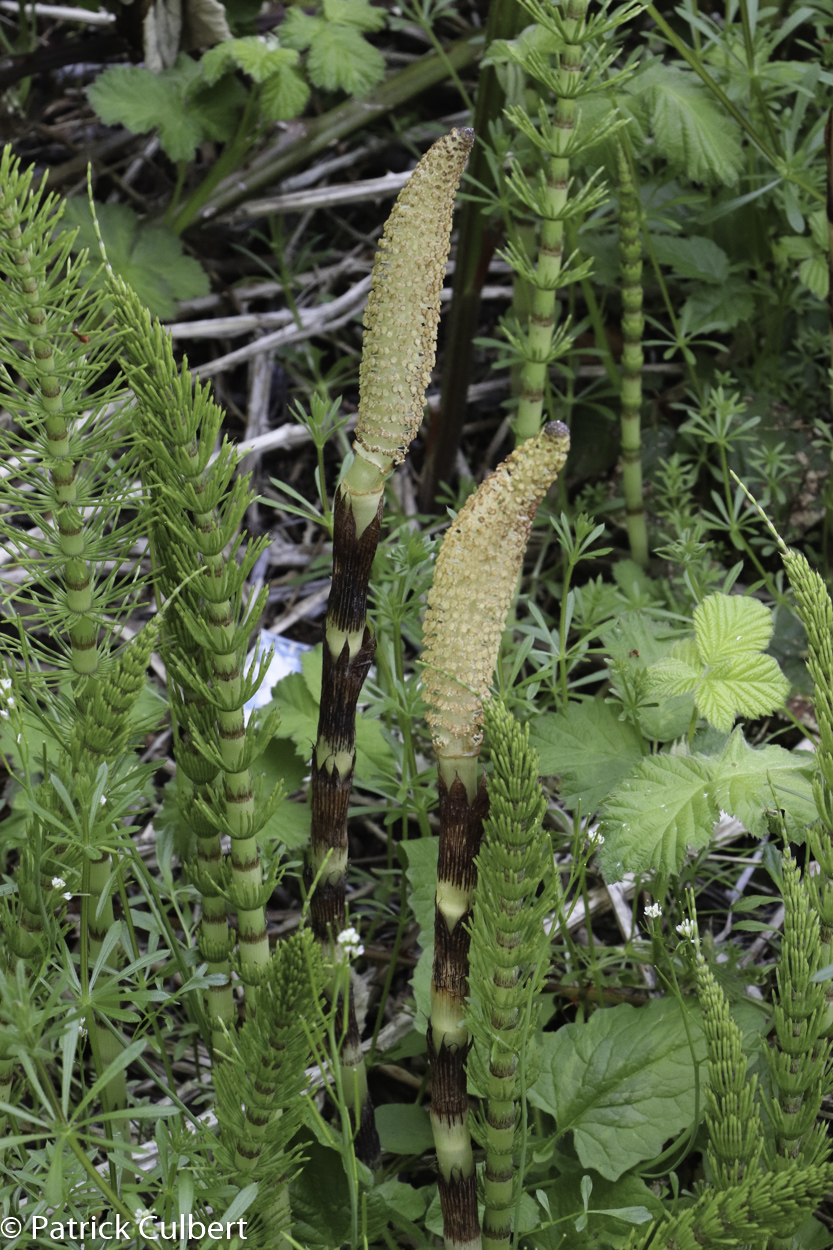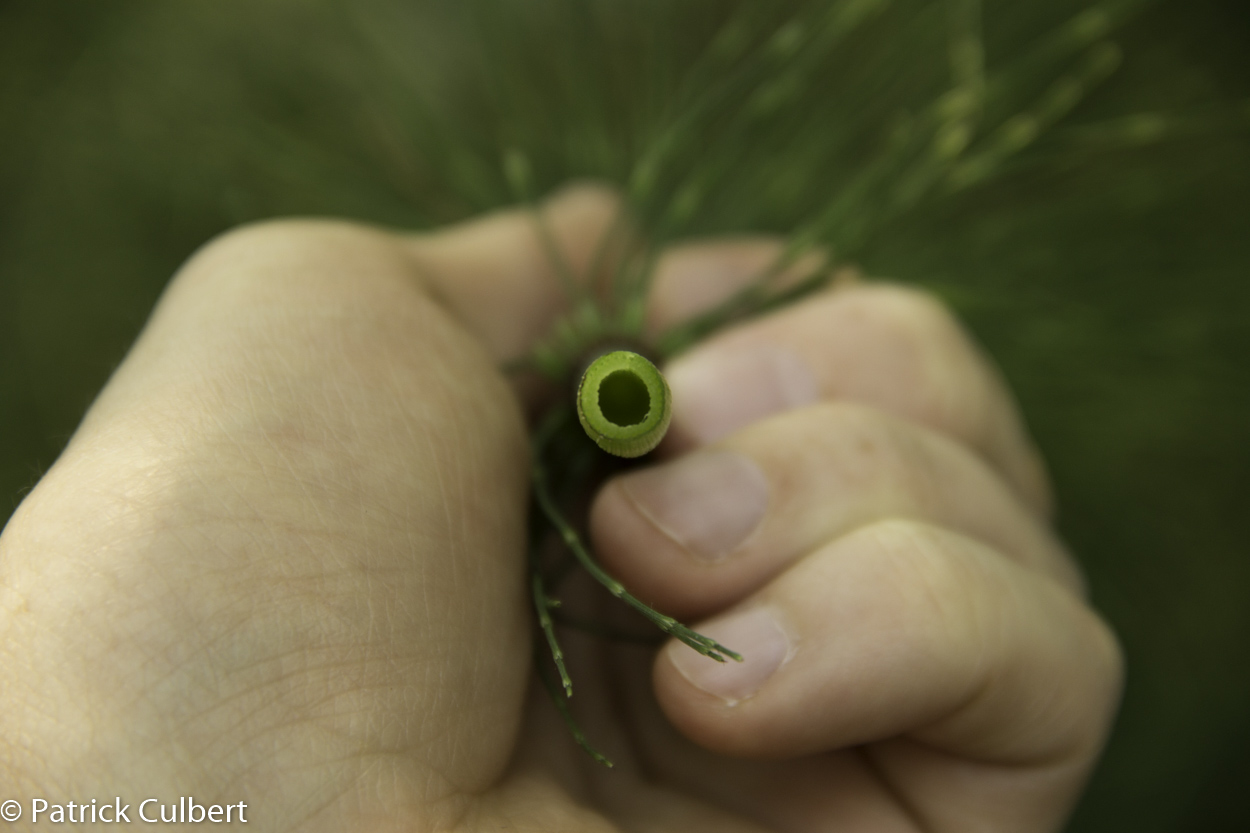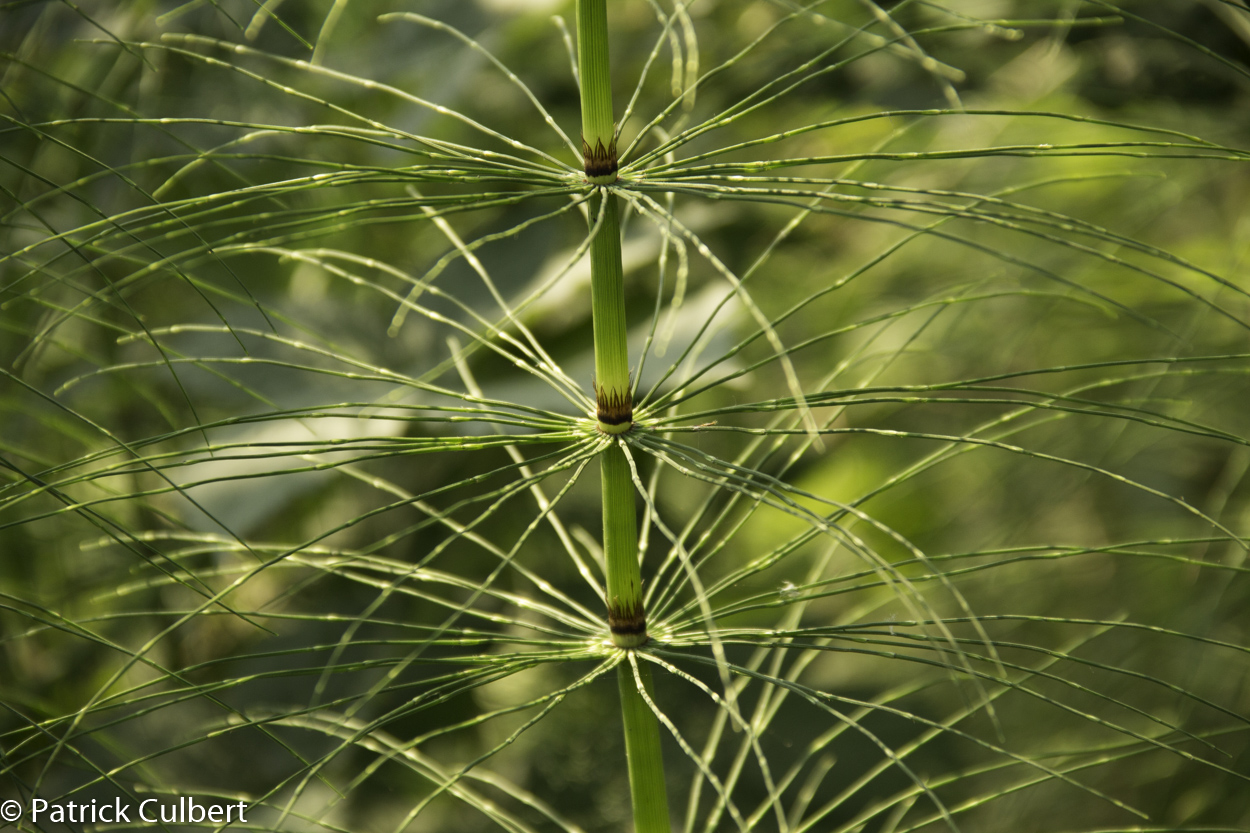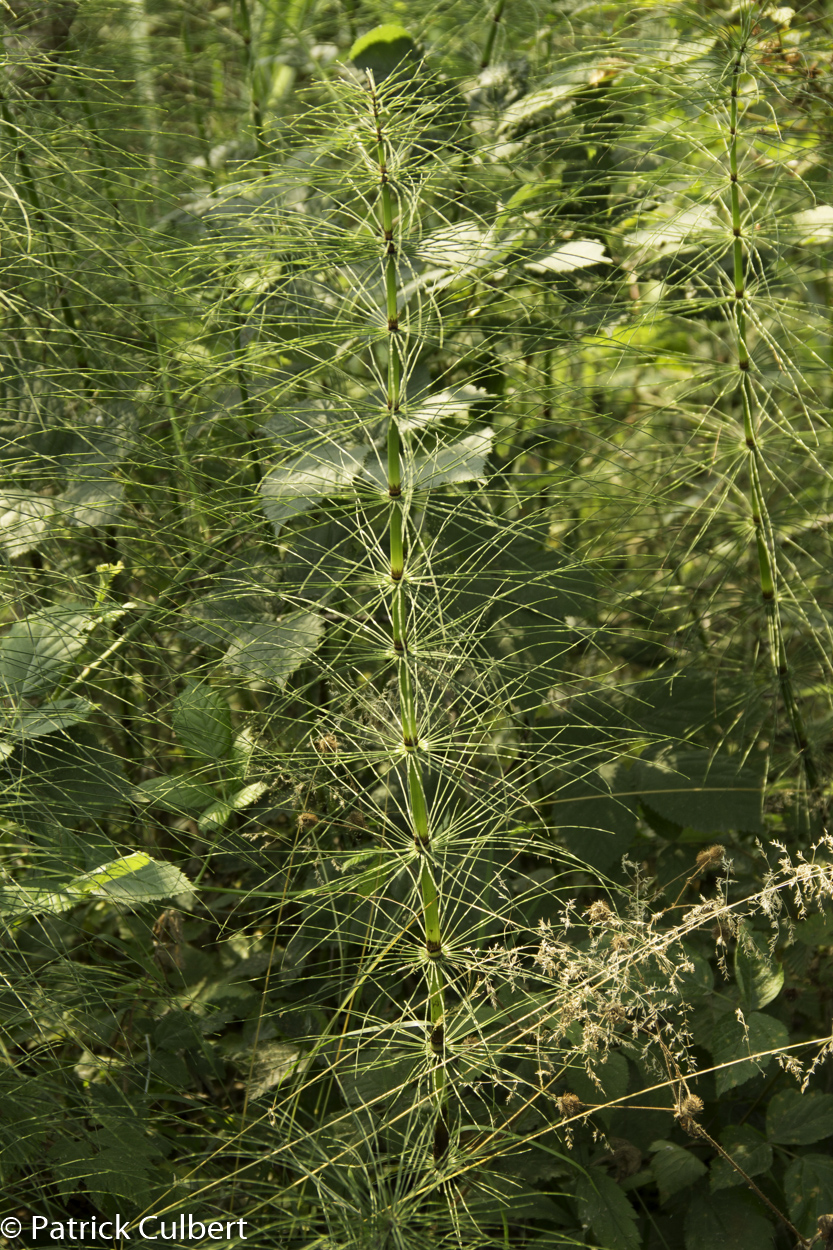Equisetum arvense – common horsetail
Common Name
common horsetail
Family
Equisetaceae
Scientific Name
Equisetum arvense
Soil Moisture Regime (SMR)
- Medium (M)
- Wet (W)
Soil Nutrient Regime (SNR)
- Poor (P)
- Medium (M)
- Rich (R)
Video link
Hitchcock, C. Leo, and Arthur Cronquist. Flora of the Pacific Northwest: An Illustrated Manual © 1973. Reprinted with permission of the University of Washington Press.
General / Habitat
- Moist to wet forests, swamps
- Often grows as a weed along roadsides
- Distributed from lowland to alpine areas
Key Identifying Characteristics
- Form: Jointed stems, either sterile or fertile.
- Sterile stems sprout after fertile stems have withered, up to 70 cm, green, branched, ridged with blackish teeth, first internode of main branches longer than the stem sheath
- Fertile stems sprout in early spring, up to 30 cm tall, brownish to whitish, unbranched, ending in a tuber-like cone, soon withering.
- Cones: Spore-bearing cones, 2-3 cm long, blunt-tipped and persistent.
Lookalikes
- Most other horsetails ie. Equisetum fluviatile in our region are unbranched or less densely branched than common horsetail
Interesting Characteristics
- One of the most widespread plants in the world. It has unusually high ploidy, with 108 pairs of chromosomes.
External References
Sources
Douglas, G.W. et al (Editors). 1998-2002. Illustrated Flora of British Columbia, Volumes 1 to 8. B.C. Min. Environ., Lands and Parks, and B.C. Min. For., Victoria, B.C.
Pojar, J. and A. MacKinnon. 2014. Plants of Coastal British Columbia Including Washington, Oregon & Alaska. B.C. Ministry of Forestry and Lone Pine Publishing. Vancouver, B.C.







